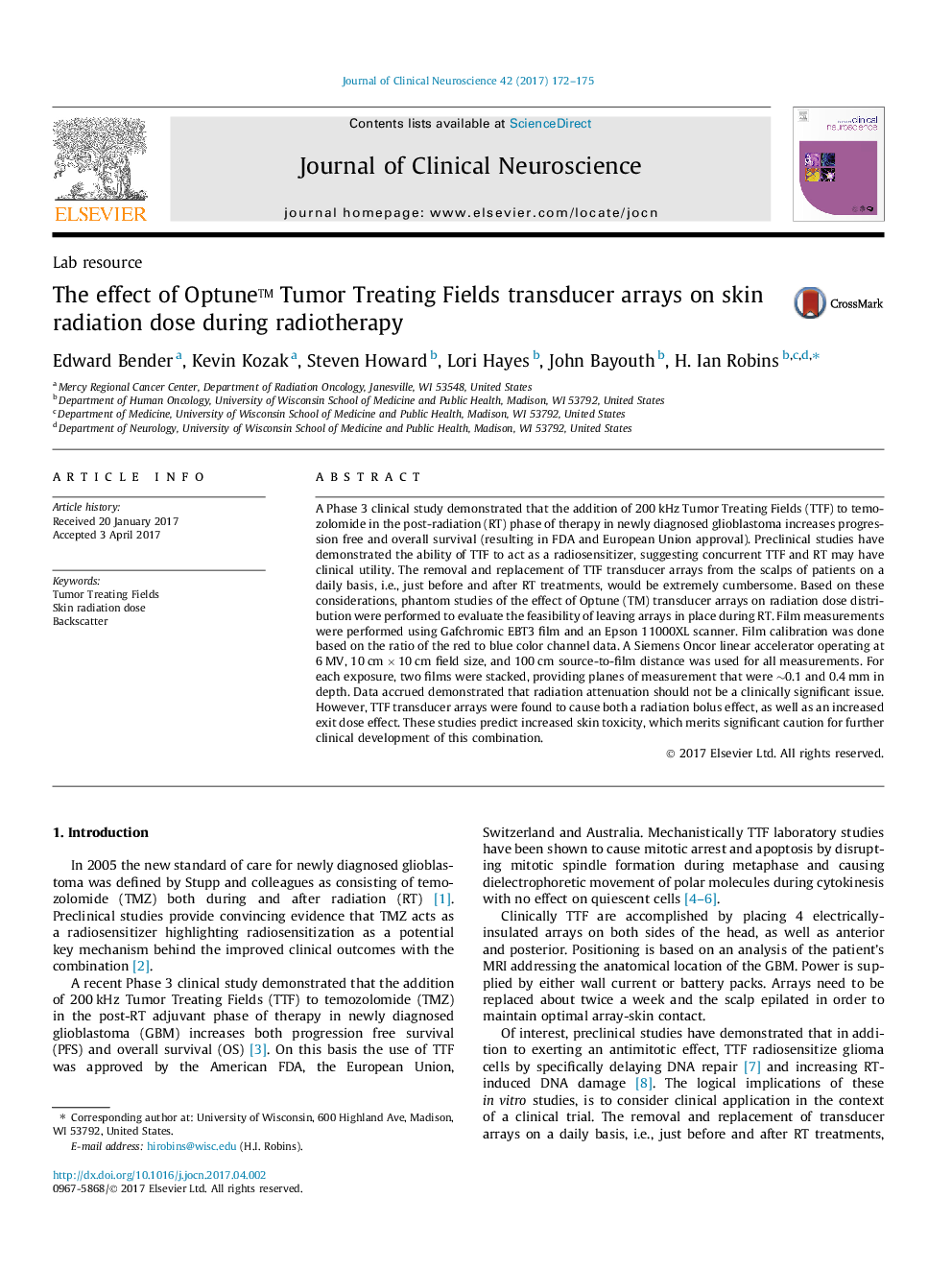| Article ID | Journal | Published Year | Pages | File Type |
|---|---|---|---|---|
| 5629765 | Journal of Clinical Neuroscience | 2017 | 4 Pages |
â¢Preclinical studies suggest Tumor Treating Fields may to act as a radiosensitizer.â¢Phantom studies of combination therapy suggested increased skin toxicity.â¢Radiation attenuation with combination therapy was not an issue in phantom studies.â¢These results warrant caution should clinical combined therapy be considered.
A Phase 3 clinical study demonstrated that the addition of 200 kHz Tumor Treating Fields (TTF) to temozolomide in the post-radiation (RT) phase of therapy in newly diagnosed glioblastoma increases progression free and overall survival (resulting in FDA and European Union approval). Preclinical studies have demonstrated the ability of TTF to act as a radiosensitizer, suggesting concurrent TTF and RT may have clinical utility. The removal and replacement of TTF transducer arrays from the scalps of patients on a daily basis, i.e., just before and after RT treatments, would be extremely cumbersome. Based on these considerations, phantom studies of the effect of Optune (TM) transducer arrays on radiation dose distribution were performed to evaluate the feasibility of leaving arrays in place during RT. Film measurements were performed using Gafchromic EBT3 film and an Epson 11000XL scanner. Film calibration was done based on the ratio of the red to blue color channel data. A Siemens Oncor linear accelerator operating at 6 MV, 10 cm Ã 10 cm field size, and 100 cm source-to-film distance was used for all measurements. For each exposure, two films were stacked, providing planes of measurement that were â¼0.1 and 0.4 mm in depth. Data accrued demonstrated that radiation attenuation should not be a clinically significant issue. However, TTF transducer arrays were found to cause both a radiation bolus effect, as well as an increased exit dose effect. These studies predict increased skin toxicity, which merits significant caution for further clinical development of this combination.
